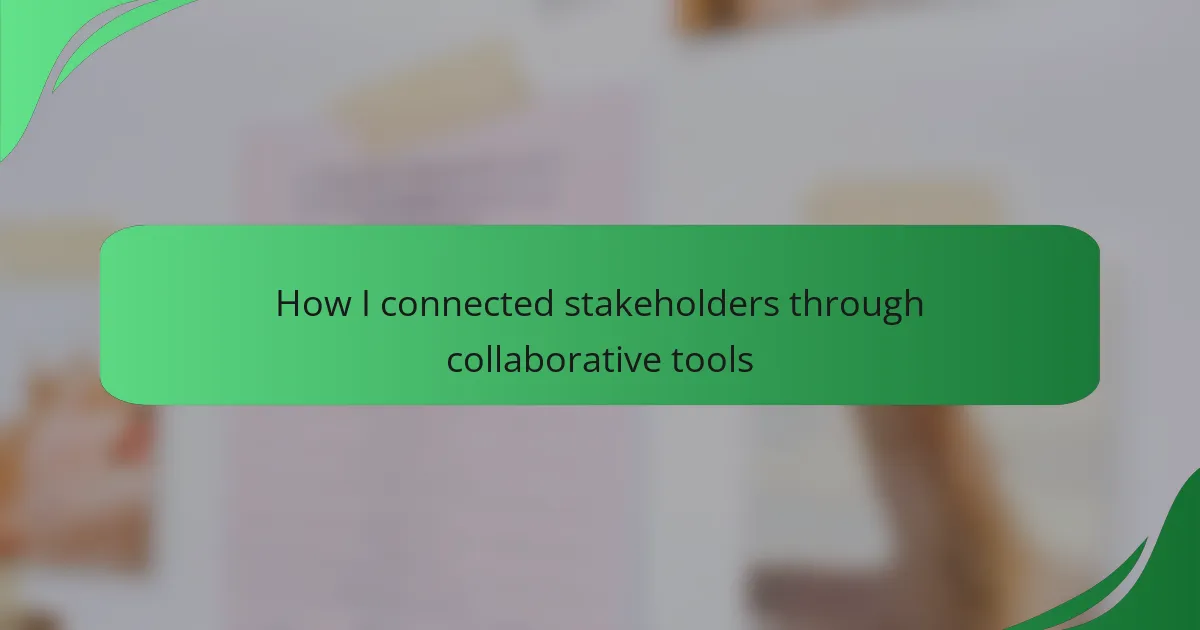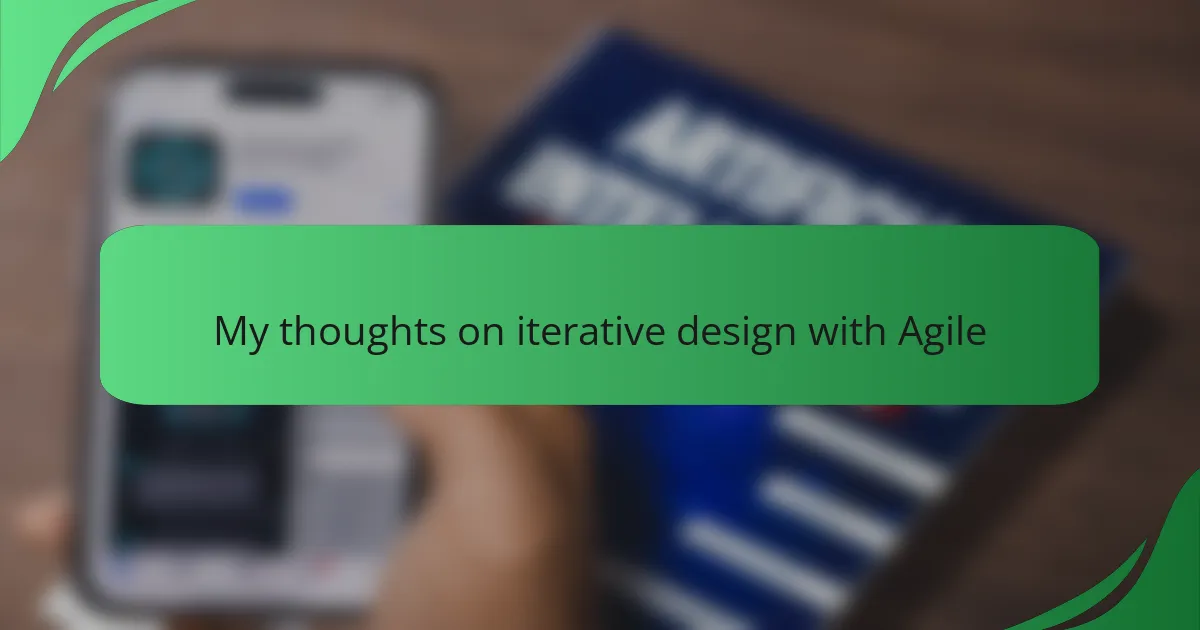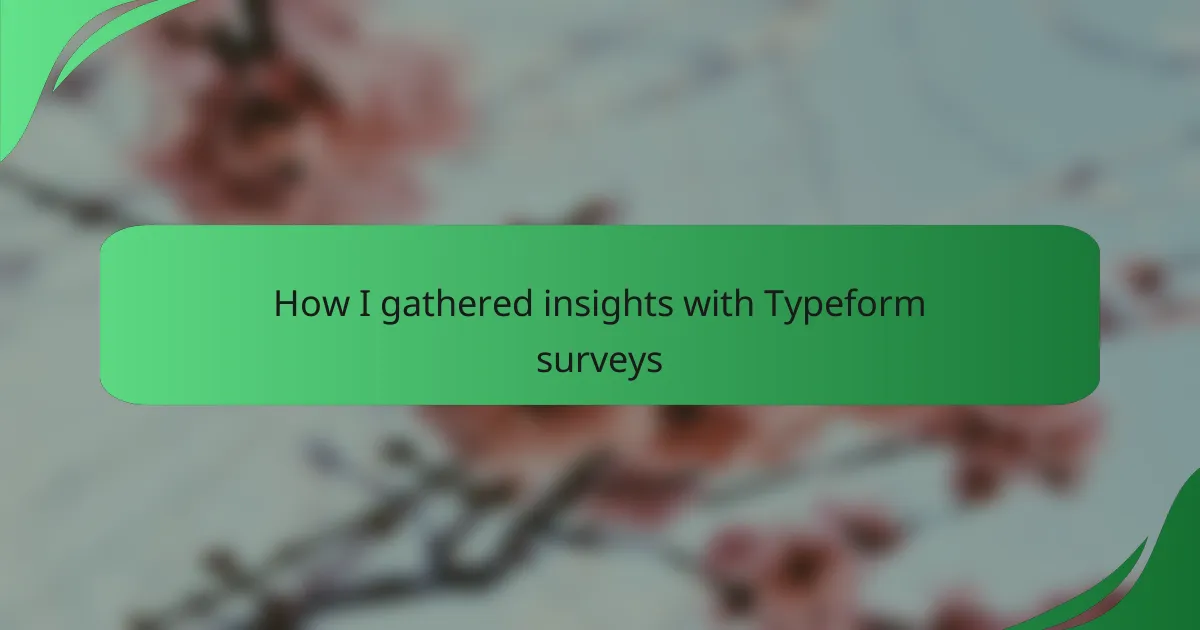Key takeaways
- User-centered design and accessibility are crucial for effective interface interaction, enhancing user experience and satisfaction.
- Collaboration tools like Slack, Zoom, and Miro facilitate communication and engagement, transforming stakeholder interactions.
- Key features of effective tools include real-time collaboration, user-friendly interfaces, and feedback mechanisms that foster open communication.
- Active listening and regular updates build trust and ensure all stakeholders feel valued, promoting creativity and project success.
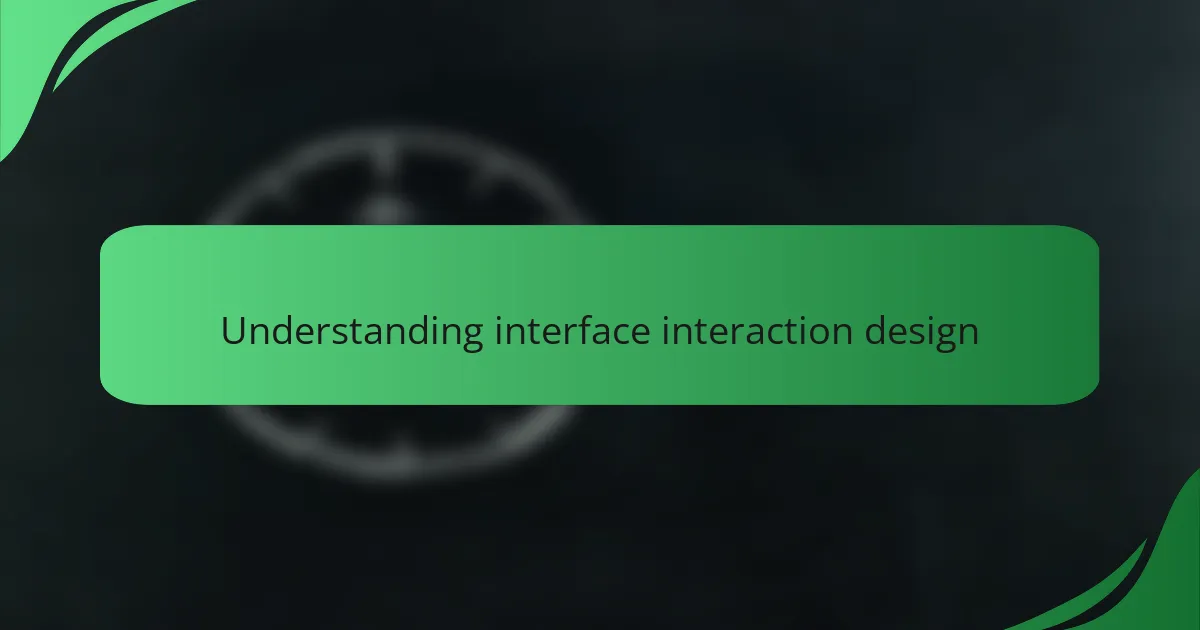
Understanding interface interaction design
Understanding interface interaction design involves recognizing how users interact with digital interfaces. From my experience, the design process goes beyond aesthetics; it’s about creating intuitive pathways for users to engage with content effectively. A well-designed interface can evoke feelings of ease and pleasure, making the experience memorable and enhancing user satisfaction.
When I worked on a project integrating a collaborative tool, I realized that thoughtful interaction design facilitated better communication among all stakeholders. Listening to their feedback was invaluable—it not only shaped the design but also fostered a sense of ownership and collaboration. Here are key elements to consider in interface interaction design:
- User-centered design principles ensure the interface meets users’ needs.
- Clarity and simplicity help avoid overwhelming users with choices.
- Feedback loops, such as notifications or confirmations, create a responsive experience.
- Accessibility features ensure inclusivity for diverse users.
- Consistency in visual and functional elements builds familiarity and trust.
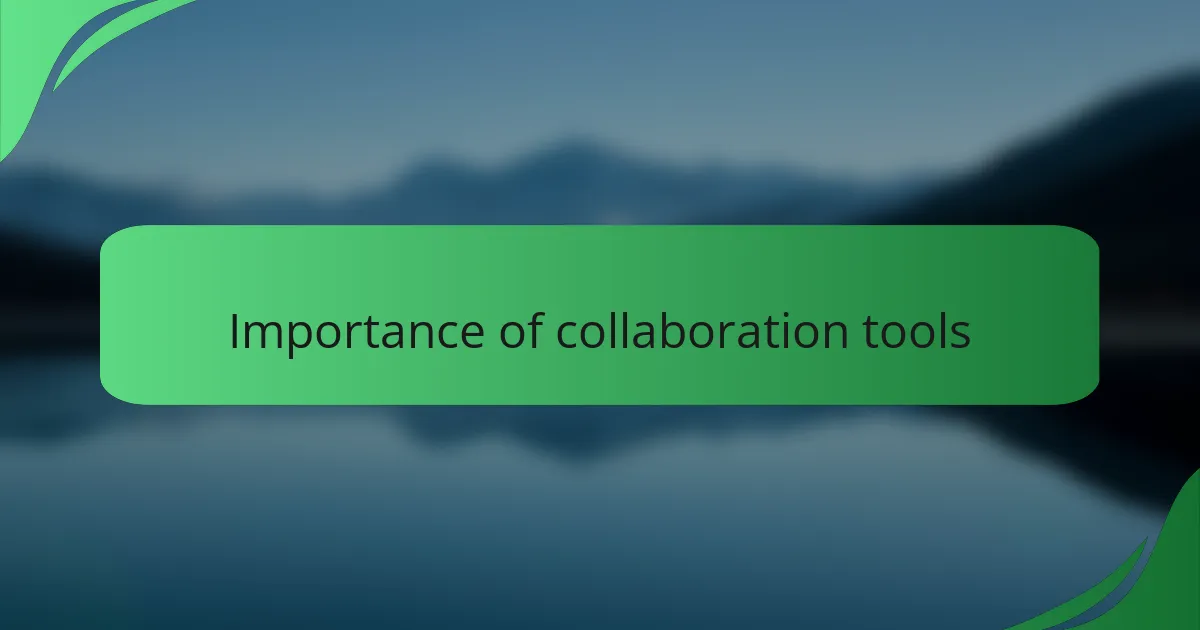
Importance of collaboration tools
When I first delved into interface interaction design, I quickly realized how critical collaboration tools are to effective communication among stakeholders. These tools not only facilitate real-time feedback but also create a shared space for ideas to blossom. I can still recall a project where using a collaborative platform transformed chaotic email exchanges into streamlined discussions, making the process much smoother and more enjoyable.
In my experience, the emotional weight lifted when everyone feels heard and valued cannot be overstated. Choosing the right tools fosters a sense of community, enabling stakeholders to engage actively, share insights, and contribute meaningfully to the design process. Here are some key reasons why collaboration tools are essential:
- Enhanced Communication: Real-time discussions encourage swift feedback and reduce misunderstandings.
- Increased Engagement: Stakeholders feel more included and motivated to participate actively in the project.
- Streamlined Workflows: Project management features help keep everyone on track and organized.
- Knowledge Sharing: Documentation and resources in one place promote learning and innovation among team members.
- Flexibility: These tools support remote work, allowing contributions from anywhere, which is crucial in today’s work environment.
By reflecting on these aspects, it becomes clear that collaboration tools are not just a convenience; they are a vital component of successful interface interaction design projects.
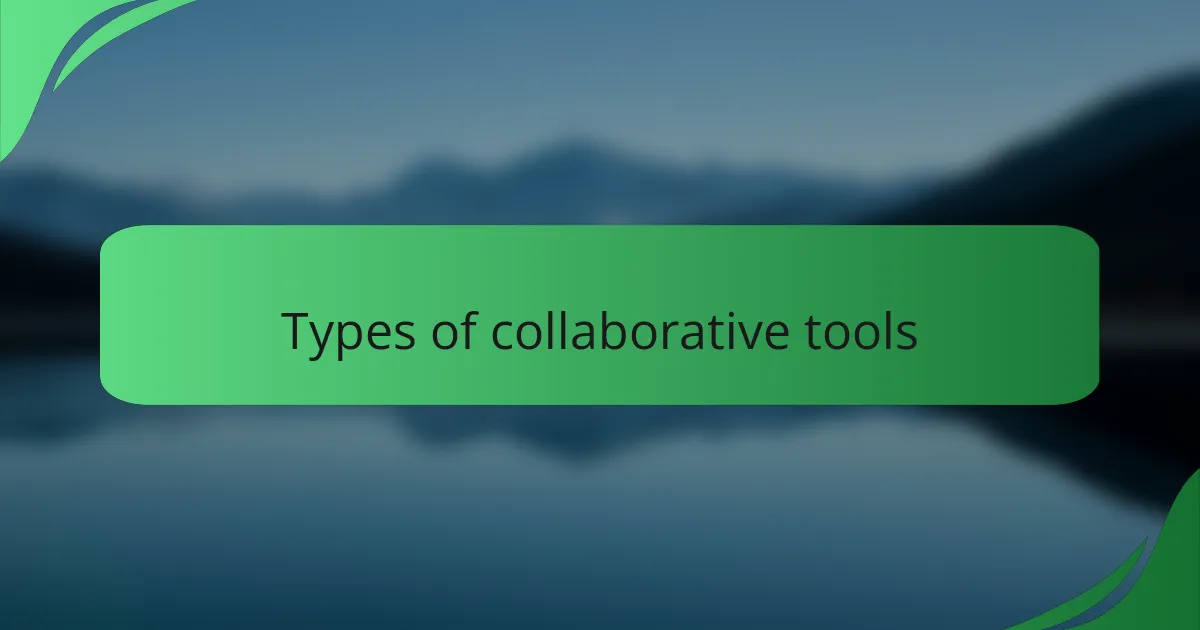
Types of collaborative tools
When it comes to connecting stakeholders, I’ve found that the right collaborative tools can make all the difference. Tools like Slack, Zoom, and Miro all serve unique purposes and can dramatically enhance communication and productivity. For instance, I recall a project where we used Miro as a digital whiteboard; it was amazing to see everyone’s ideas come to life in real-time, fostering creativity and ownership among the team.
Each tool has its strengths. Slack is fantastic for quick communication; it feels less formal and encourages informal discussions. Zoom, on the other hand, excels in face-to-face interactions, which I believe can strengthen relationships, especially when the team is remote. Miro stands out when it comes to visual collaboration, allowing us to brainstorm together, regardless of location.
Here’s a comparison table that highlights some key features of these tools:
| Tool | Best For |
|---|---|
| Slack | Real-time messaging and team updates |
| Zoom | Video calls and meetings |
| Miro | Visual brainstorming and collaborative design |
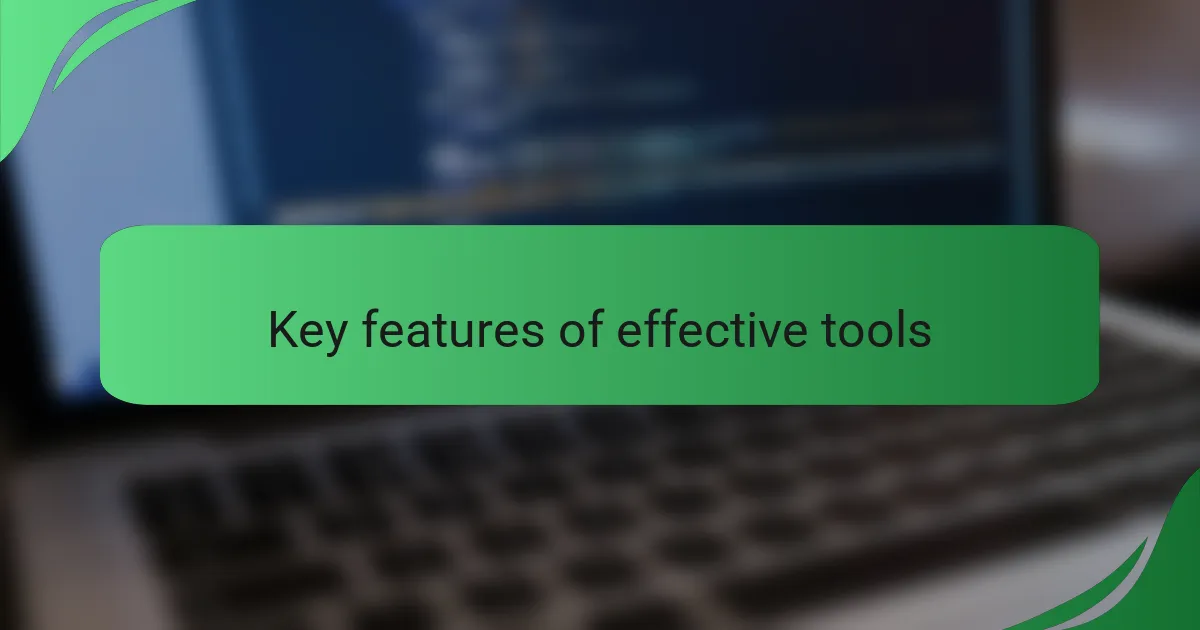
Key features of effective tools
When it comes to collaborative tools, I believe that effective features make all the difference in fostering communication among stakeholders. For instance, I’ve found that real-time editing capabilities create an interactive environment where everyone can contribute simultaneously, eliminating the frustration of having to wait for others to finish their input. During a recent project, this feature not only streamlined our workflow but also significantly enhanced the dynamism of our discussions.
Another critical feature is intuitive user interfaces. I recall a particular instance where a project nearly stalled because the tool we were using was overly complex. After we switched to a simpler interface, I noticed an immediate boost in engagement and participation. The ease of use allowed stakeholders to focus more on collaboration rather than navigating software challenges.
Key features of effective tools include:
- Real-time collaboration: This allows multiple users to work on documents simultaneously, enhancing teamwork.
- User-friendly interface: An intuitive design ensures stakeholders can easily navigate the tool without extensive training.
- Integration with other systems: Seamless interaction with other tools and platforms can save time and streamline processes.
- Feedback mechanisms: Enabling comments and suggestions keeps the conversation going and fosters a culture of open communication.
- Customization options: Adapting the tool to meet specific team needs can enhance usability and comfort for stakeholders.
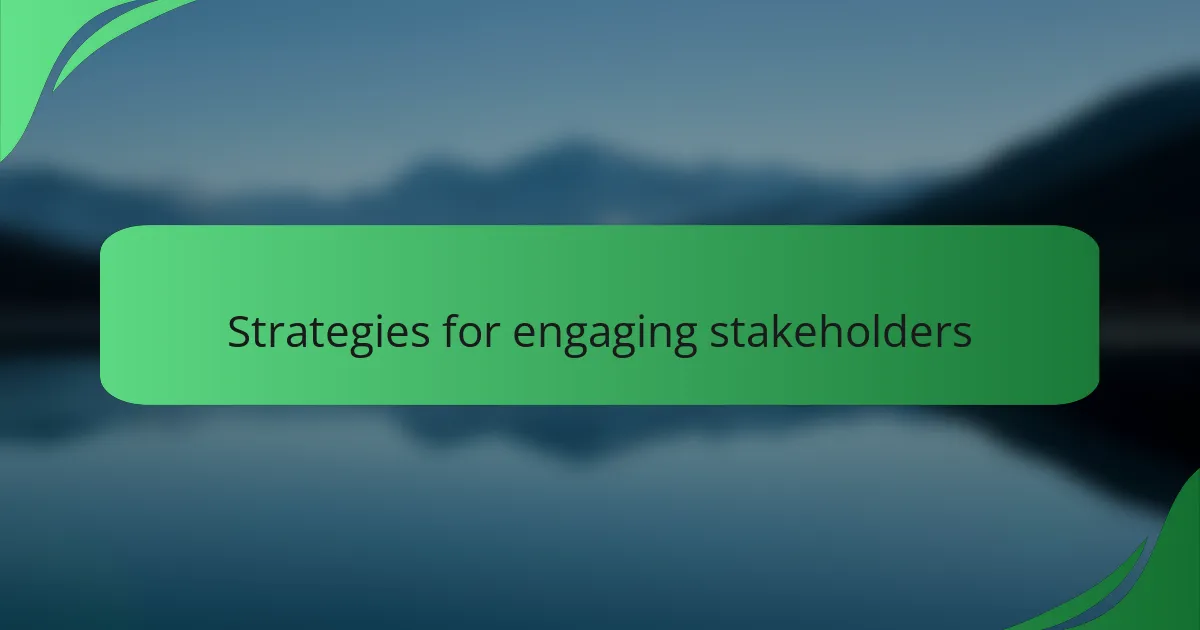
Strategies for engaging stakeholders
Engaging stakeholders can feel daunting, but I’ve found that the right strategies can turn this process into a collaborative and enriching experience. One effective approach I’ve employed is to utilize interactive tools, such as online brainstorming sessions. These tools not only facilitate open communication but also allow everyone to visually contribute their ideas, making it easier for all voices to be heard.
Additionally, I prioritize regular check-ins to ensure alignment and address any concerns. I remember a project where a simple weekly update call transformed the stakeholder relationship. It built trust and ensured everyone felt involved and valued, driving the project forward with enthusiasm.
Here’s a comparison of two common strategies for engaging stakeholders:
| Strategy | Benefits |
|---|---|
| Interactive Workshops | Fosters creativity and collective problem-solving |
| Regular Updates | Builds trust and keeps stakeholders informed |
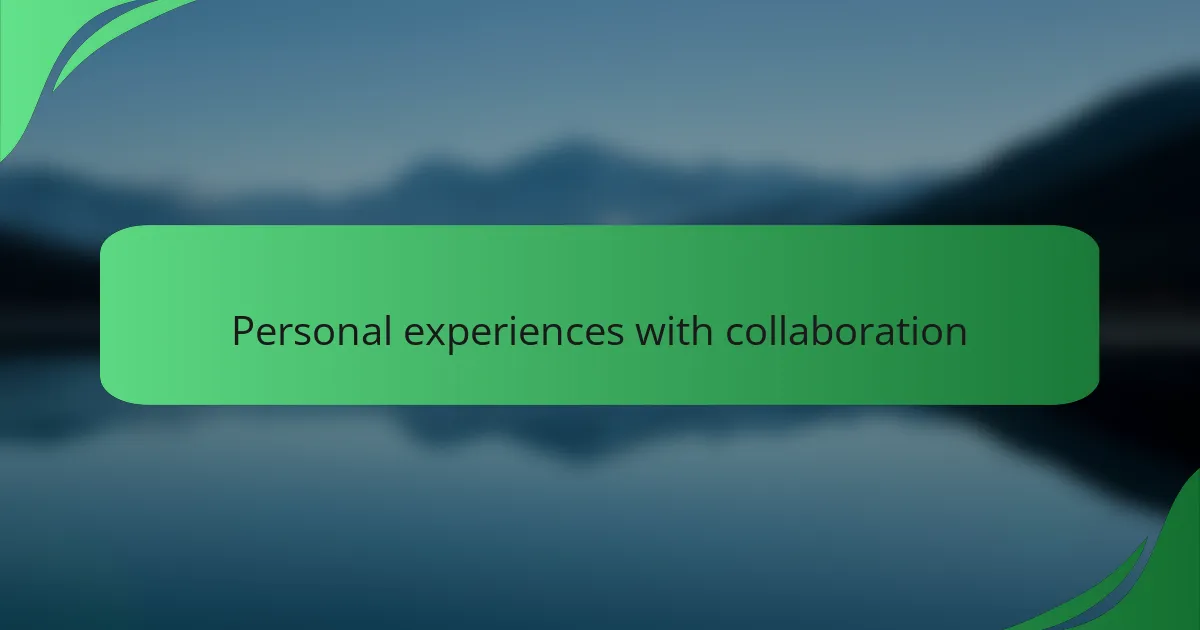
Personal experiences with collaboration
While collaborating with diverse stakeholders, I’ve experienced how vital open dialogue is. I vividly remember a project where we conducted brainstorming sessions using a visual collaboration tool. Watching ideas bounce around in real-time was exhilarating. It sparked creativity and made everyone feel genuinely included. Isn’t it fulfilling when everyone’s voice contributes to the final design?
In another instance, I found that fostering a casual environment encouraged more honest feedback. During a video call, I noticed that when I shared personal anecdotes related to our goals, others opened up, sharing their own experiences. This not only built rapport but also enriched our conversation. It really drove home the idea that collaboration isn’t just about work—it’s about connection.
I’ve also learned the importance of flexibility in collaboration. There was a time when unexpected challenges arose during a project, and being able to pivot quickly while keeping the lines of communication open made all the difference. It reminded me of the resilience that stems from teamwork. In moments like those, I realized collaboration is more than tools; it’s about trust and shared commitment.
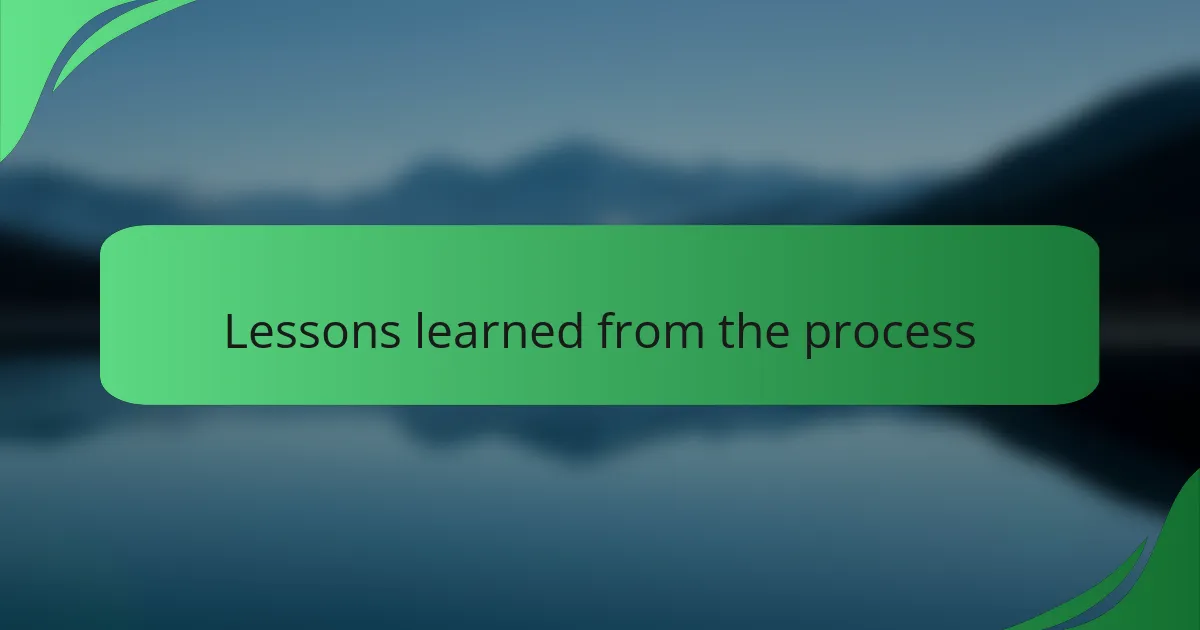
Lessons learned from the process
I’ve learned that effective communication is at the core of successful stakeholder collaboration. During my experience, I observed how using collaborative tools not only streamlined discussions but also fostered trust among team members. One memorable moment was when a visual brainstorming session led to a breakthrough idea that we all championed, showcasing the power of collective creativity.
Another valuable lesson was the importance of active listening. I found that when I made a conscious effort to acknowledge every voice in the room, it encouraged more participants to share their thoughts. This approach not only strengthened relationships but also enriched our project outcomes.
Here’s a comparison of traditional vs. collaborative approaches in stakeholder engagement:
| Aspect | Traditional Approach | Collaborative Approach |
|---|---|---|
| Communication | Hierarchical | Open and Inclusive |
| Decision Making | Top-down | Consensus-driven |
| Feedback | One-way | Interactive |
| Engagement | Passive | Active Participation |
